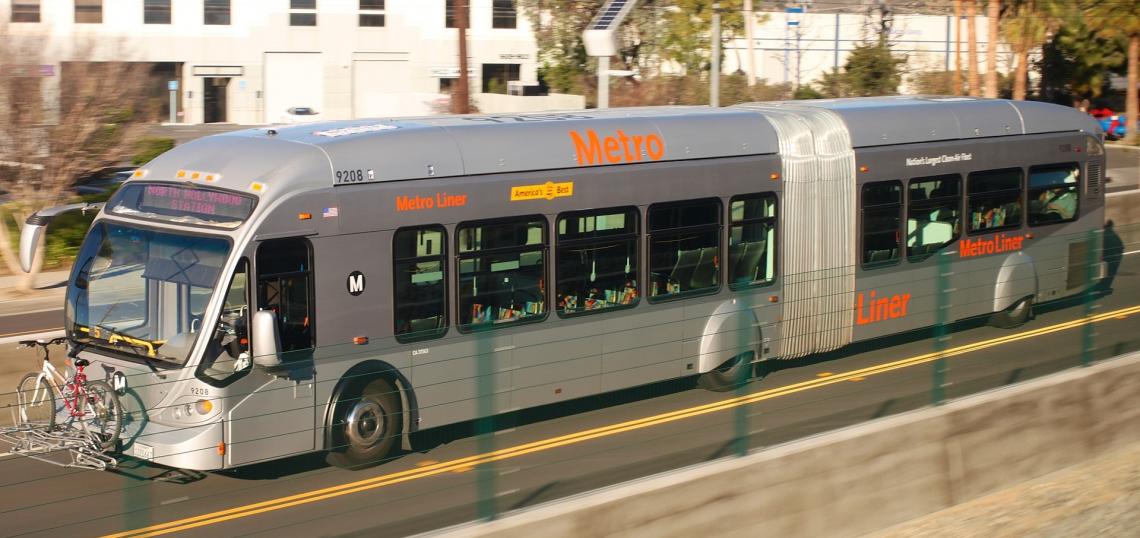The days of gas-powered buses on the San Fernando Valley's G Line busway are over.
As of this past summer, Metro has transitioned to all-electric buses on the G Line, which travels 18 miles on a former rail right-of-way between Chatsworth and North Hollywood. Prior to the pandemic, more than 22,000 passengers used the service on weekdays.
“Transportation is not just the largest source of air pollution in our state — it’s one of our greatest opportunities to realize our vision of cleaner air, lower emissions, and healthier communities,” said Los Angeles Mayor Eric Garcetti in prepared remarks. “If we’re going to act this decade to save our planet, we need to see solutions on our streets today — and watching these zero-emission buses roll down our roads brings us one step closer to turning the tides of the climate crisis.”
Metro's rollout of zero-emission buses on the G Line began in July 2020 and was completed roughly one year later. The electrification project, which cost $80 million, includes 40 buses, each with a range of 150 miles on a single charger, as well as charging equipment and other supporting infrastructure.
“Today we are working tirelessly to create a more environmentally sustainable, equitable and resilient public transportation system for all our customers,” said Metro chief executive officer Stephanie N. Wiggins in a statement. “Our zero-emission bus goals are an important part of our overall strategy to reduce our agency’s carbon footprint and become carbon neutral. We continue as a transit leader in our march towards a more sustainable and resilient transportation system that will benefit our customers, our industry, and our planet.”
Metro, which has set a goal of achieving a zero-emission fleet by the year 2030, will next turn to its second active bus rapid transit line - the J Line which travels between El Monte and San Pedro. The $50-million electrification project is expected to be completed within two years.
Zero-emission fleet or not, electrification in some form was inevitable for the G Line, which is slated to be converted into a light rail line in the decades to come using funding approved by Los Angeles County voters in 2016. In the interim, Metro is slated to add grade separation and four-quadrant crossing gates to speed travel times on the bus rapid transit corridor.
- G Line (Urbanize LA)






